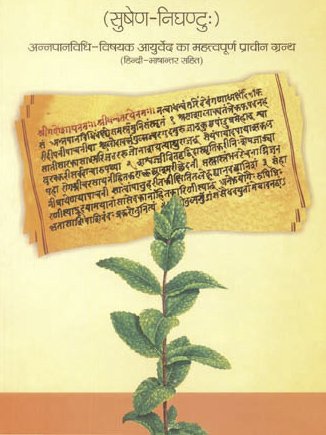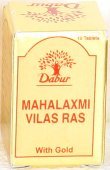Vila, Vilā, Viḻa, Viḻā, Viḷa, Vīḻa: 12 definitions
Introduction:
Vila means something in Hinduism, Sanskrit, Marathi, Jainism, Prakrit, biology, Tamil. If you want to know the exact meaning, history, etymology or English translation of this term then check out the descriptions on this page. Add your comment or reference to a book if you want to contribute to this summary article.
The Sanskrit term Viḷa can be transliterated into English as Vila or Vilia, using the IAST transliteration scheme (?).
In Hinduism
Ayurveda (science of life)
Nighantu (Synonyms and Characteristics of Drugs and technical terms)
Source: Wisdom Library: Raj NighantuVila (विल) refers to a “cave” according to the second chapter (dharaṇyādi-varga) of the 13th-century Raj Nighantu or Rājanighaṇṭu (an Ayurvedic encyclopedia). The Dharaṇyādi-varga covers the lands, soil, mountains [viz., Vila], jungles and vegetation’s relations between trees and plants and substances, with their various kinds.

Āyurveda (आयुर्वेद, ayurveda) is a branch of Indian science dealing with medicine, herbalism, taxology, anatomy, surgery, alchemy and related topics. Traditional practice of Āyurveda in ancient India dates back to at least the first millenium BC. Literature is commonly written in Sanskrit using various poetic metres.
Biology (plants and animals)
Source: Google Books: CRC World Dictionary (Regional names)Vila in India is the name of a plant defined with Limonia acidissima in various botanical sources. This page contains potential references in Ayurveda, modern medicine, and other folk traditions or local practices It has the synonym Feronia elephantum Corr. (among others).
Example references for further research on medicinal uses or toxicity (see latin names for full list):
· Revisio Generum Plantarum (1891)
· Fam. Nat. Syn. Monogr. (1846)
· Transactions of the Linnean Society of London (1800)
· Nat. Hist. (1774)
· Journal of the Washington Academy of Sciences (1914)
· Species Plantarum (1753)
If you are looking for specific details regarding Vila, for example side effects, chemical composition, diet and recipes, health benefits, extract dosage, pregnancy safety, have a look at these references.

This sections includes definitions from the five kingdoms of living things: Animals, Plants, Fungi, Protists and Monera. It will include both the official binomial nomenclature (scientific names usually in Latin) as well as regional spellings and variants.
Languages of India and abroad
Marathi-English dictionary
Source: DDSA: The Molesworth Marathi and English Dictionaryvilā (विला).—f (vēlā S through P) Time, season, juncture. It occurs only in notes; from the Persian
--- OR ---
viḷā (विळा).—Better written with इ. See iḷā &c.
--- OR ---
vīḷa (वीळ).—f ē C (vēlā S) Flow or rise of the tide. v lāga, yē, hō.
--- OR ---
vīḷa (वीळ).—m Vulgar corruption of vēḷa Time. Used esp. in the sense of The day, the daytime: also a day: also a half-day, a forenoon or an afternoon.
Source: DDSA: The Aryabhusan school dictionary, Marathi-Englishviḷā (विळा).—Better written with i, as iḷā.
Marathi is an Indo-European language having over 70 million native speakers people in (predominantly) Maharashtra India. Marathi, like many other Indo-Aryan languages, evolved from early forms of Prakrit, which itself is a subset of Sanskrit, one of the most ancient languages of the world.
Sanskrit dictionary
Source: DDSA: The practical Sanskrit-English dictionaryVila (विल).—See बिलम् (bilam).
Derivable forms: vilam (विलम्).
Source: Cologne Digital Sanskrit Dictionaries: Shabda-Sagara Sanskrit-English DictionaryVila (विल).—n.
(-laṃ) 1. A hole, a chasm, a vacuity. 2. A cave, a cavern. m.
(-laḥ) 1. One of Indra'S horses. 2. A sort of reed or cane, (Calamus rotang.) E. vil to divide, &c., aff. ka .
Source: Cologne Digital Sanskrit Dictionaries: Benfey Sanskrit-English DictionaryVila (विल).—or bila, I. m. One of Indra's horses. Ii. n. 1. A chasm, a hole, [Pañcatantra] ii. [distich] 14; 107, 2 (of a mouse). 2. A cave, a cavern, [Pañcatantra] 193, 15; [Rāmāyaṇa] 4, 9, 19.
Source: Cologne Digital Sanskrit Dictionaries: Monier-Williams Sanskrit-English DictionaryVila (विल):—[from vil] etc. See bila.
Source: Cologne Digital Sanskrit Dictionaries: Yates Sanskrit-English DictionaryVila (विल):—(laṃ) 1. n. A hole; a cave. m. A horse of Indra; a reed, cane.
Source: DDSA: Paia-sadda-mahannavo; a comprehensive Prakrit Hindi dictionary (S)Vila (विल) in the Sanskrit language is related to the Prakrit word: Vila.
[Sanskrit to German]
Sanskrit, also spelled संस्कृतम् (saṃskṛtam), is an ancient language of India commonly seen as the grandmother of the Indo-European language family (even English!). Closely allied with Prakrit and Pali, Sanskrit is more exhaustive in both grammar and terms and has the most extensive collection of literature in the world, greatly surpassing its sister-languages Greek and Latin.
Prakrit-English dictionary
Source: DDSA: Paia-sadda-mahannavo; a comprehensive Prakrit Hindi dictionary1) Vila (विल) in the Prakrit language is related to the Sanskrit word: Vrīḍ.
2) Vila (विल) also relates to the Sanskrit word: Vila.
Prakrit is an ancient language closely associated with both Pali and Sanskrit. Jain literature is often composed in this language or sub-dialects, such as the Agamas and their commentaries which are written in Ardhamagadhi and Maharashtri Prakrit. The earliest extant texts can be dated to as early as the 4th century BCE although core portions might be older.
See also (Relevant definitions)
Starts with (+513): Vil-akaviral, Vila-kalkol, Vila-kulaikol, Vila-kulipayccu, Vilaa, Vilaayathi shera, Vilaayati-tulasi, Vilaayithi hullu, Vilaayithi kachhar, Vilaayithi pundi, Vilaayiti-hullu, Vilaaythi jaw, Vilaaythichinch, Vilaaythikorkand, Vilaaythimug, Vilaba, Vilabba, Vilabdha, Vilabdhi, Vilabh.
Ends with (+110): Adhananvila, Aidavila, Ailavila, Anavila, Ariavila, Ashrvila, Avila, Bavila, Bharikeyvila, Bhavila, Bouganvila, Caturmasyanvila, Cavila, Chundadvila, Cittavila, Cittuvila, Cundadvila, Darshapurnamasanvila, Darshapurnamasayorandavila, Davila.
Full-text (+446): Avila, Shakatavila, Vilam, Peru-vila, Vilakkutai, Vilapparicam, Vilavelumpu, Velvila, Vilasa, Vilapputai, Vilakkurippu, Kuttivila, Vilaccir, Vilashaya, Vilas, Vilavasin, Vilavarici, Vilaukas, Mahavila, Karuvila.
Relevant text
Search found 18 books and stories containing Vila, Vilā, Viḷā, Vīḷa, Vīla, Viḻa, Viḻā, Viḷa, Vīḻa; (plurals include: Vilas, Vilās, Viḷās, Vīḷas, Vīlas, Viḻas, Viḻās, Viḷas, Vīḻas). You can also click to the full overview containing English textual excerpts. Below are direct links for the most relevant articles:
The Religion and Philosophy of Tevaram (Thevaram) (by M. A. Dorai Rangaswamy)
Chapter 56 - Tirukkalukkundram or Tirukkalukkunram (Hymn 81) < [Volume 3.5 - Pilgrim’s progress: to the North]
Chapter 68 - Thirumullaivoyal or Tirumullaivayil (Hymn 69) < [Volume 3.6 - Pilgrim’s progress: away from Otriyur and Cankili]
Chapter 2.5 - Ravana-anugraha-murti (depiction of the Ravana) < [Volume 2 - Nampi Arurar and Mythology]
Ishavasya Upanishad with Shankara’s Commentary (by M. Hiriyanna)
Tiruvaymoli (Thiruvaimozhi): English translation (by S. Satyamurthi Ayyangar)
Pasuram 7.3.1 < [Section 3 - Third Tiruvaymoli (Vellaic curi cankotu)]
Pasuram 10.3.7 < [Section 3 - Third Tiruvaymoli (Vey maru tol inai)]
Rig Veda (translation and commentary) (by H. H. Wilson)
Rig Veda 1.133.1 < [Sukta 133]
Haribhakti-sudhodaya (by Tridandi Sri Bhakti Prajnan Yati Maharaj)
Related products

